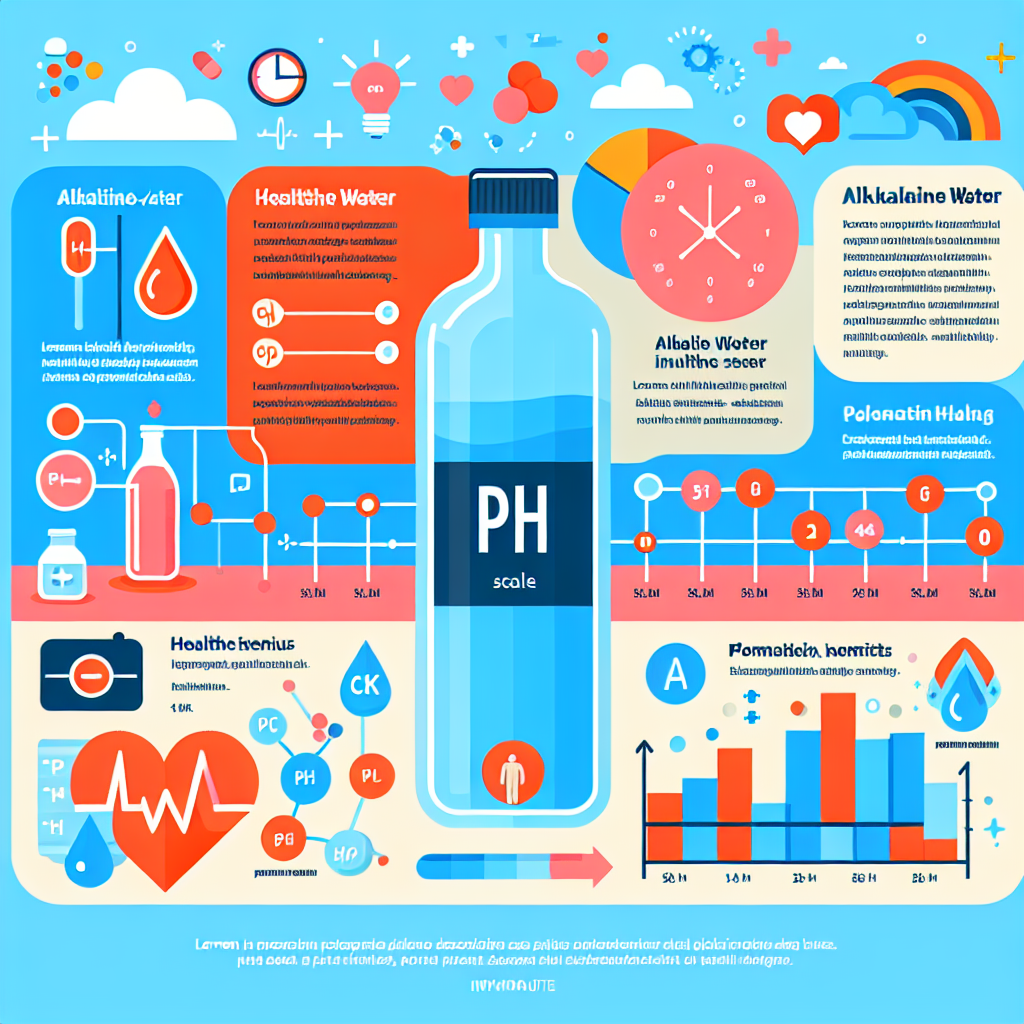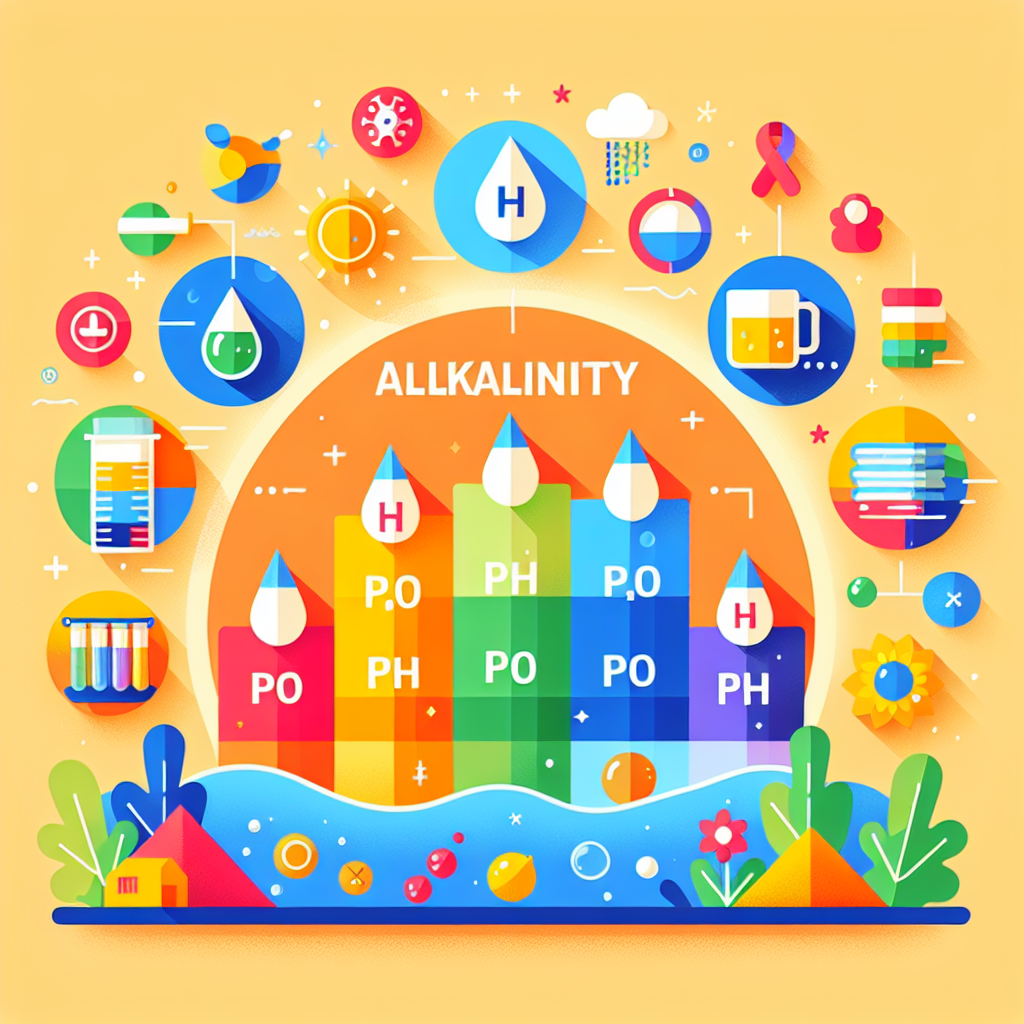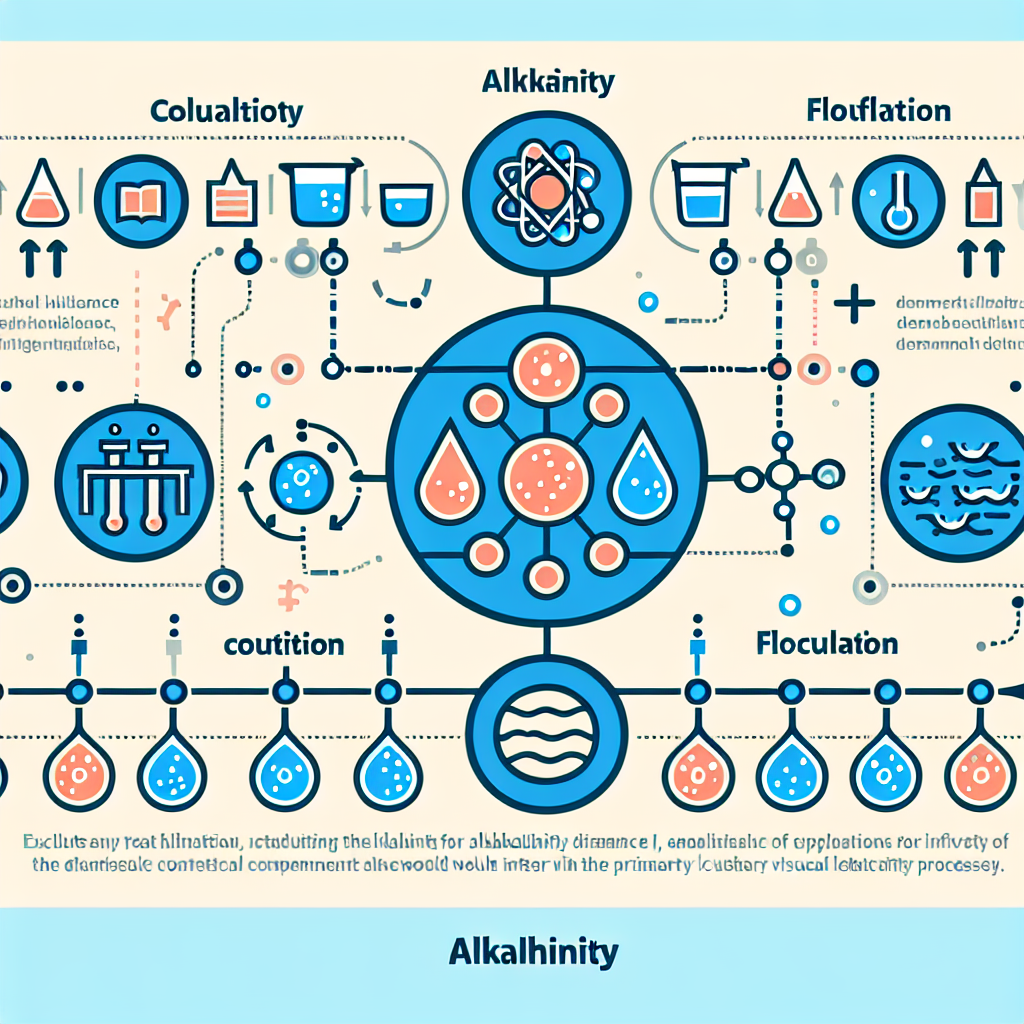Understanding Water Alkalinity: Impact on Treatment Processes

Understanding Water Alkalinity: Impact on Treatment Processes
Introduction
Welcome to the fascinating world of alkalinity water, where your H2O can be more than just a thirst quencher! In recent years, the buzz around alkaline water has surged, making it a hot topic among health enthusiasts and environmental scientists alike. But what exactly is alkalinity in water, and why should we care?
Think of alkalinity as the superhero cape that helps maintain the pH balance in drinking water. It’s like having a trusty sidekick that fights off acidity and keeps your water from turning into a villainous potion. High pH water, or alkaline water, is often touted for its potential health benefits ranging from better hydration to improved metabolic function.
But hold on! Before you dive headfirst into a bottle of the stuff, it’s important to understand how alkalinity works and its implications for treatment processes. After all, not all alkaline waters are created equal. Some come straight from nature’s bounty think pristine alkaline spring waters while others are processed through various methods, including reverse osmosis.
In this blog post, we’ll explore:
- The science behind alkalinity in drinking water
- How it impacts treatment processes
- The benefits and potential side effects of consuming alkaline water
- The difference between naturally occurring and processed alkaline waters
So grab your favorite glass (preferably one that says “I love H2O”), and let’s dive deeper into the world of alkalinity water!
What is Alkalinity in Water?
Alkalinity in water is like the unsung hero of your hydration game. It refers to the water’s capacity to neutralize acids, essentially acting as a buffer against pH changes. Think of alkalinity as the bouncer at a party, keeping the acidity levels in check so that everything flows smoothly.
In more scientific terms, alkalinity is primarily due to the presence of bicarbonates, carbonates, and hydroxides. These compounds work together to help maintain a stable pH level, which is crucial for both aquatic life and human health. Without sufficient alkalinity, water can become too acidic, leading to all sorts of problems from damaging infrastructure to affecting the taste of your favorite beverage.
So how do we measure this magical quality? Alkalinity is typically measured in parts per million (ppm) or milligrams per liter (mg/L) using titration methods that involve adding acid until a certain pH level is reached. This gives us a clear picture of how much buffering capacity our water has.
Understanding alkalinity levels in drinking water isn’t just for scientists; it’s crucial for municipalities and engineers involved in wastewater treatment processes. After all, knowing how alkaline your water is can help you address issues related to corrosion, scaling, and even taste!
The Importance of Alkalinity in Water Chemistry
- Stabilizes pH: Helps prevent rapid changes that could harm aquatic ecosystems.
- Corrosion Control: High alkalinity can protect pipes from corrosion by maintaining a balanced environment.
- Nutrient Availability: Affects how nutrients are absorbed by plants and organisms in water bodies.
The Impact on Health
Adequate alkalinity contributes not only to the safety and palatability of drinking water but also plays a role in our health. Studies suggest that consuming alkaline drinking water may offer various health effects such as improved hydration and better digestion. However, it’s essential to balance these benefits against potential alkaline water side effects moderation is key!
The Role of Alkalinity in Water Treatment Processes
When it comes to water treatment, alkalinity is like the unsung hero of the process. Think of it as the trusty sidekick that keeps everything balanced and running smoothly. Alkalinity in water plays a critical role in maintaining pH balance, which is fundamental for effective treatment.
Impact on pH Balance During Treatment
Alkalinity acts as a buffer against fluctuations in pH levels. In simple terms, it helps stabilize the water’s acidity or basicity, ensuring that treatment processes can proceed without a hitch. If you have high pH water, alkalinity ensures that it doesn’t swing wildly into acidic territory, which could hinder various treatment stages.
Effect on Coagulation and Flocculation
In the world of water treatment, coagulation and flocculation are like the dance partners of purification. Alkalinity influences these processes by affecting how well particles clump together. When alkalinity levels are optimal, particles find it easier to bond during coagulation, leading to more efficient removal of impurities. It’s like throwing a party where all the guests get along less chaos and more clarity!
Influence on Microbial Activity and Nutrient Removal
Microbial activity thrives within specific alkalinity ranges. A well-balanced alkalinity level fosters an environment where beneficial microorganisms can flourish while keeping harmful ones at bay. This is crucial for nutrient removal processes such as nitrogen and phosphorus reduction key players in preventing eutrophication in waterways.
As municipalities and engineers dive into the nitty-gritty of wastewater treatment, understanding how alkalinity interacts with various processes becomes essential for designing systems that are both efficient and environmentally friendly.
The Relationship Between Alkalinity and pH Levels
When we talk about alkalinity water, it’s essential to understand how it dances with pH levels. Think of alkalinity as the bouncer at a club, keeping the acidity in check so that the party can go on smoothly. In this section, we’ll break down how these two concepts interact and why they matter for your drinking water.
Understanding High pH Water and Its Implications
High pH water, often referred to as alkaline water, has gained popularity for its purported health benefits. But what does that really mean? In simple terms, when the pH level exceeds 7, the water becomes alkaline. This is where our friends, the alkaline minerals like calcium and magnesium, come into play. They not only help maintain a stable pH but also contribute to various alkaline water health effects.
Alkaline vs Acidic Water: Key Differences
So what’s the scoop on alkaline vs acidic water? Here’s a quick breakdown:
| Property | Alkaline Water | Acidic Water |
|---|---|---|
| pH Level | > 7 (typically 8-9) | < 7 (typically 5-6) |
| Taste | Smoother, less tangy | Tart or sour flavor |
| Health Perception | Hydrating and beneficial | Poor hydration potential |
Healthy pH Levels in Drinking Water Standards
The World Health Organization recommends that drinking water maintain a pH between 6.5 and 8.5 for optimal health. This range ensures that our bodies can absorb nutrients effectively while minimizing any potential harm from overly acidic or basic waters.
Key Takeaway: Maintaining healthy pH levels in drinking water is crucial for hydration and overall health. Alkaline waters can provide benefits but should be consumed within recommended guidelines.
The relationship between alkalinity and pH is not just a chemistry lesson; it’s vital for ensuring that our drinking water is both safe and beneficial. Understanding this dynamic can help municipalities and treatment operators make informed decisions about their water supply strategies.
Alkaline Water: Benefits and Health Effects
Let’s dive into the refreshing world of alkalinity water, shall we? Alkaline water, often touted as a health elixir, has gained popularity for its purported benefits. But what’s the real scoop?
Overview of Alkaline Water Benefits
First off, let’s talk about the alkaline water benefits. This high pH water is believed to:
- Boost hydration: Some studies suggest that alkaline drinking water may hydrate better than regular water.
- Aid digestion: A balanced pH in drinking water can help maintain optimal digestive health.
- Support bone health: Some research hints that alkaline waters may help reduce bone resorption.
- Enhance detoxification: Alkaline waters are thought to assist in flushing out toxins from the body.
How Does Alkalinity Affect the Body?
The question on everyone’s lips: how does alkalinity affect the body? Well, our bodies thrive on balance. While our stomachs are naturally acidic (to handle all that pizza), drinking alkaline water can help maintain a healthy pH balance overall. Think of it as giving your body a little spa day!
Potential Health Effects of Alkaline Drinking Water
However, not everything is sunshine and rainbows. The potential health effects of alkaline drinking water can vary based on individual circumstances:
- May reduce acid reflux: For some people, alkaline water can help neutralize stomach acid and alleviate symptoms.
- Could interfere with digestion: Too much alkalinity might hinder your stomach’s natural acidity needed for digestion.
- Electrolyte balance concern: Overconsumption might disturb your body’s natural electrolyte balance.
Key Takeaway: While many tout the benefits of alkaline water, moderation is key! It’s essential to listen to your body and consult with a healthcare professional if you’re considering making it a daily staple.
Alkaline Water Side Effects to Consider
No product is without its quirks! Some possible side effects include:
- Nausea or upset stomach if consumed excessively.
- Potential for skin irritations in sensitive individuals.
- A risk of altering gut flora if consumed in large quantities over time.
Naturally Occurring Alkaline Waters vs. Processed Alkaline Waters
When it comes to alkalinity water, the debate often boils down to two main contenders: naturally occurring alkaline waters and their processed counterparts. But what’s the difference, and why should you care? Let’s dive into this hydration showdown!
Naturally Occurring Alkaline Waters
Naturally alkaline waters, like those from pristine alkaline spring waters, have a high pH level due to the minerals they pick up as they flow through rocks and soil. This process enriches them with beneficial minerals such as calcium, magnesium, and potassium all of which are like the cool kids on the block when it comes to healthy hydration.
- Mineral Content: Naturally alkaline waters boast a rich mineral profile that can enhance your body’s electrolytes.
- Taste: Many find these waters have a refreshing taste that can make hydration feel less like a chore.
- Health Benefits: Some studies suggest that naturally alkaline water may help with acid reflux and improve overall digestion.
Processed Alkaline Waters
On the flip side, we have processed alkaline waters, which are often created using methods like ionization or adding an alkalinity booster for water. This means they start as regular water but undergo a transformation to boost their pH levels. Think of it as a glow-up for your H2O!
- Purification Process: Many brands use reverse osmosis to filter out impurities before adjusting the pH level. While this can create clean drinking options, it might strip away some beneficial minerals.
- Convenience: Processed alkaline waters are widely available in stores, making them easy to grab on-the-go.
- Brand Variability: The best alkaline water brands offer different formulations; some may even add flavors or additional nutrients!
Takeaway: Both naturally occurring and processed alkaline waters have their pros and cons. Naturally sourced options provide a more mineral-rich experience, while processed varieties offer convenience and consistency.
The choice ultimately depends on your personal preference and health goals. Whether you’re sipping from a mountain spring or grabbing a bottle from the store shelf, understanding these differences can help you make an informed decision about your hydration journey!
The Impact of Reverse Osmosis on Alkalinity Levels
Alright, let’s dive into the nitty-gritty of how reverse osmosis (RO) affects alkalinity in our drinking water. If you’ve ever wondered why your filtered water tastes different or why you might need an alkalinity booster for water, this section is for you!
Reverse osmosis is like the bouncer at a club, filtering out all the unwanted guests (a.k.a. impurities) from your water. While it does a fantastic job of removing contaminants, it also takes with it some essential minerals that contribute to alkalinity. This can result in low acid drinking waters that may not provide the same health benefits as their more mineral-rich counterparts.
How Reverse Osmosis Affects Alkalinity
- Mineral Removal: During the RO process, beneficial minerals such as calcium and magnesium are stripped away. These minerals are crucial for maintaining healthy pH levels in water.
- Lower pH Levels: The absence of these minerals often leads to a decrease in alkalinity and can create slightly acidic water, which can be less desirable for those seeking alkaline drinking water.
- Taste Changes: Many consumers report that RO-treated water has a bland taste compared to naturally alkaline waters due to the lack of minerals.
Solutions for Boosting Alkalinity Post-Filtration
No need to panic! If you’ve got RO water and want to up its alkalinity game, here are some strategies:
- Add Mineral Drops: These are designed specifically to enhance the mineral content of your filtered water. Just a few drops can transform your low pH water into something more balanced!
- Use an Alkaline Filter: Consider adding an alkaline filter after your RO system. These filters can reintroduce essential minerals back into your drinking water.
- DIY Methods: Want to get crafty? You can make alkaline water at home by adding baking soda or lemon juice (yes, despite being acidic, lemon juice has an alkalizing effect once metabolized).
Takeaway: While reverse osmosis is excellent for purifying drinking water, it’s crucial to address the loss of alkalinity. Boosting alkalinity post-filtration ensures you’re not just drinking clean water but also reaping the benefits associated with high pH levels!
Taste and Electrolytes in Alkaline Waters vs. Regular Waters
- Taste differences between alkaline and regular water
- The role of electrolytes in alkaline waters
- A consumer perspective on taste preference






